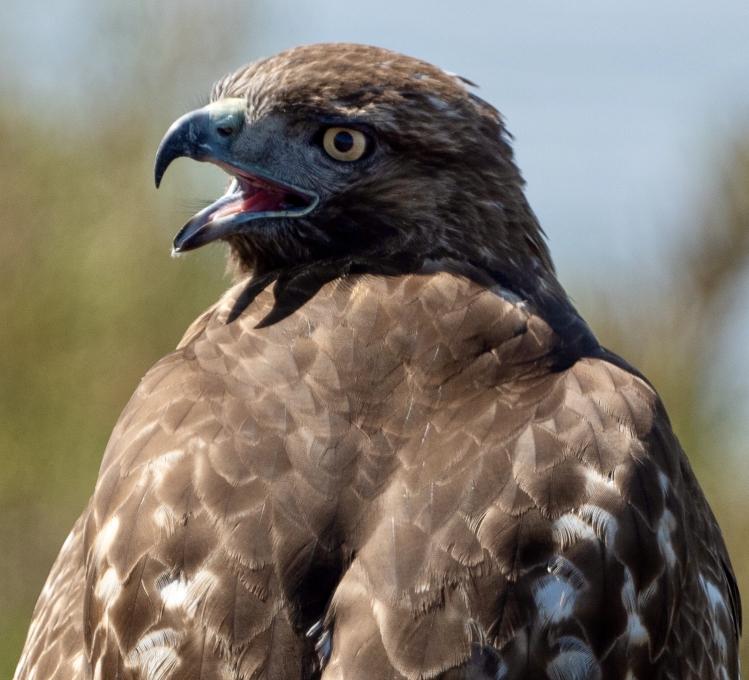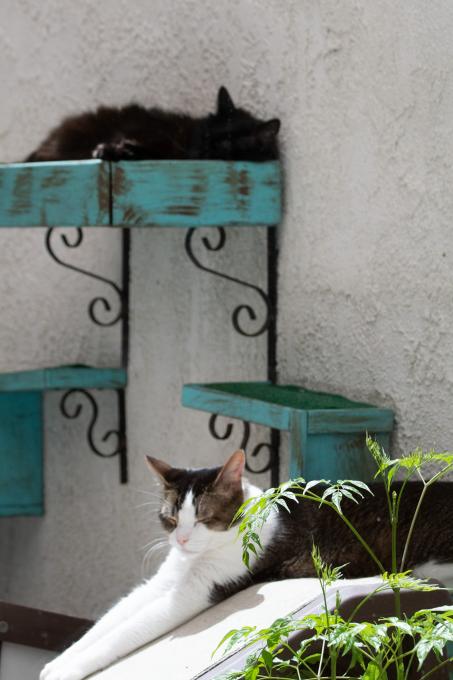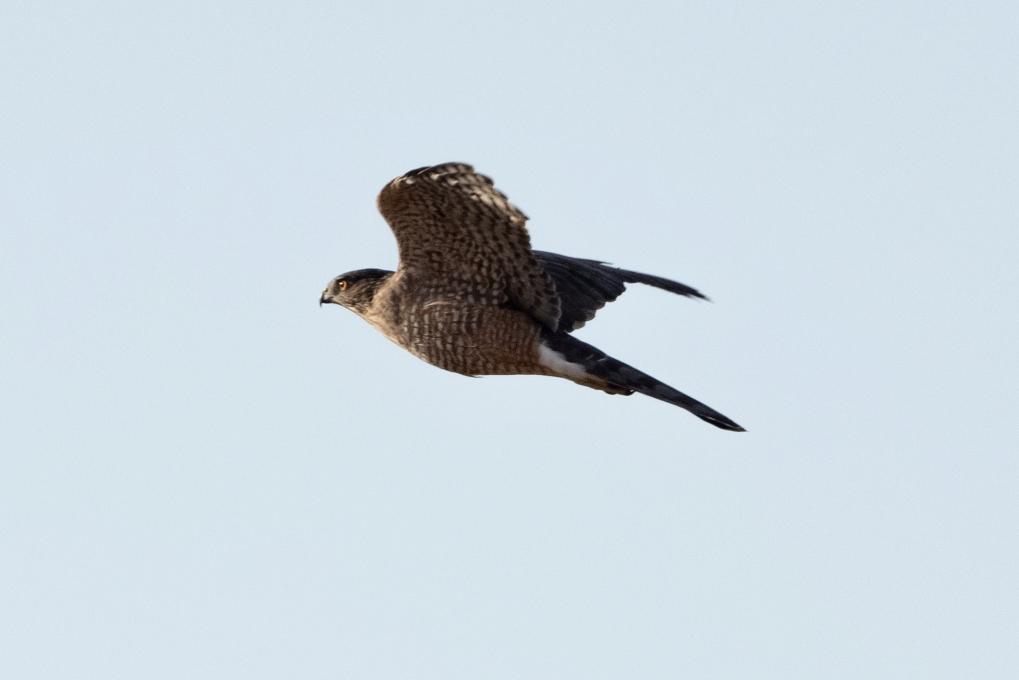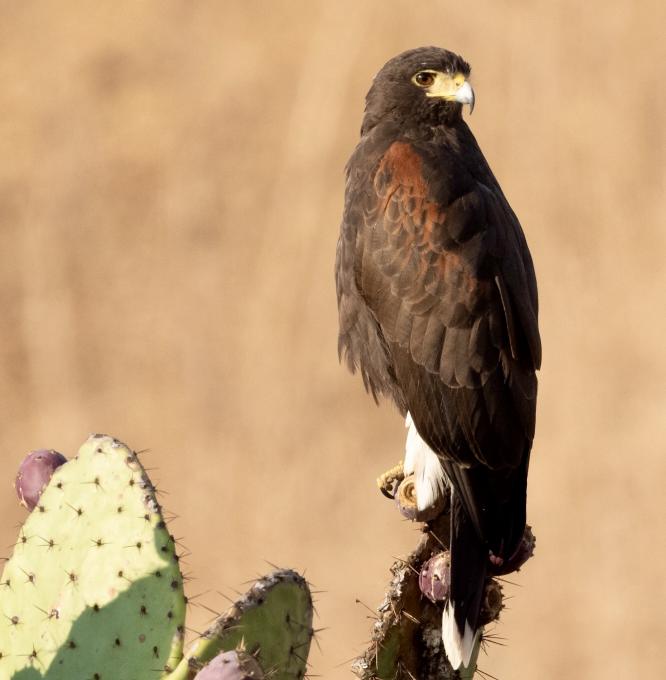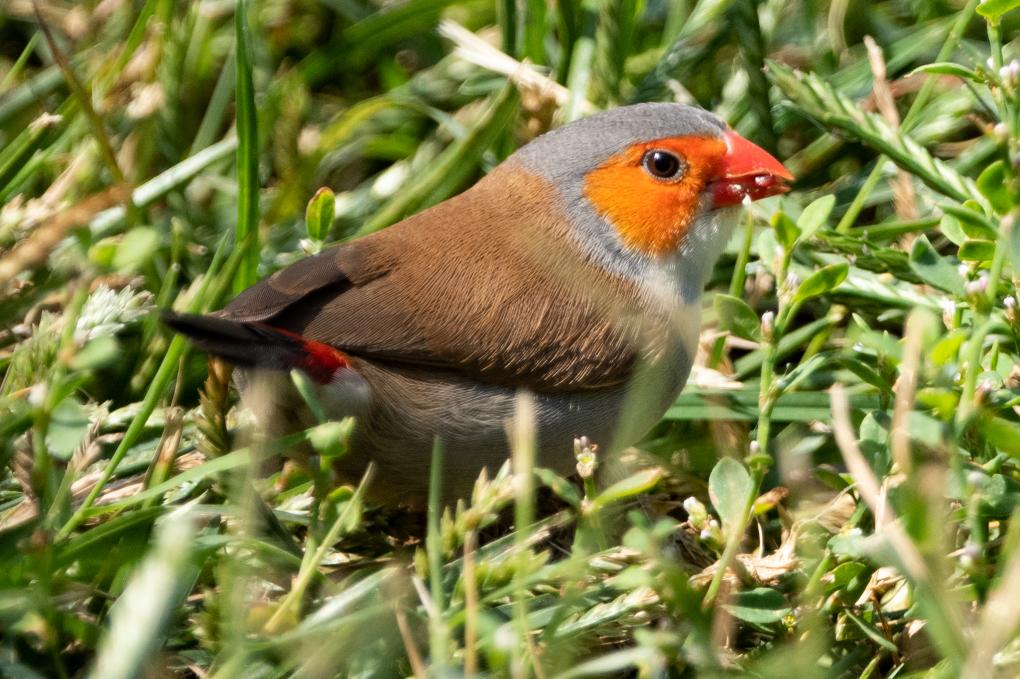Cynthia
Forum Replies Created
Viewing 16 posts - 1 through 16 (of 16 total)
-
CynthiaParticipantMy biggest issue is deleting. Do I really need 57 photos of a Red-tailed Hawk in flight? Probably not. By nature I’m very much a minimalist, but this doesn’t seem to apply to photography. I need to learn to let go and delete—just keep the best shots, and when I improve on those, delete the older ones. I do keep lousy photos just for bird I.D. Sadly, I have quite a few of those! But those constitute my evidence that I’ve seen certain birds, especially the rare ones like the Masked Booby that was way out of range for my lens, but I took the shot anyway just to have it. Who knows when I’ll ever see one of those birds again? In terms of editing, my problem is over cropping, and according to what Melissa taught us, I probably need to get a better camera with more pixel power. I’m salivating over the Nikon D850; my D7500 just isn’t cutting it anymore. I use a 500mm f/5.6 lens for birding, and sometimes that doesn’t feel like enough, hence the desire to crop, but I just can’t carry around any more weight than that. Adding a teleconverter makes low light photos near impossible with this lens. So I need to save up. This is an expensive hobby! I enjoy sharing on FB bird and nature groups, and I love to see what others are contributing. I try to limit my sharing to one or two of my best shots of the day, maybe a few more if I’ve had a banner day or if a sequence of shots tells a compelling story. Nobody wants to look at 20 shots of a Snowy Egret. At least I don’t think they do! Sometimes I’ll share a bit of info about the bird, especially if it’s a rare one or one that has traveled far, and when sharing photos of fledglings, nests, etc. I do explain my process so folks will know I’ve respected the bird. So in keeping with my philosophy, I’ll share one photo that I took yesterday that I’m proud of: A Red-tailed Hawk in flight. I’ve been trying and trying to get a decent shot, and I think this is the best so far. It was close enough not to require much cropping. Yay! And I gave it a bit of room, thank you, Melissa, to fly.

-
CynthiaParticipantI had the same issue and replaced my ancient and very slow laptop with an IPad Pro that has 2 TB of storage. The display is crystal clear; I can upload directly from the Nikon to Lightroom in seconds—a few minutes if I have hundreds of RAW files to upload. It’s amazing. Lightroom Mobile might not have all the features of Classic, I’m not sure, but it feels like more than enough for my purposes. Screen is 12.9” and if there’s a grainy photo, it’s quite obvious. Best display I’ve ever seen. Good luck!
-
CynthiaParticipantLike everyone else, I have struggled to take tack sharp BIF photos. Handholding a heavy lens and camera with my puny arms is no easy feat! I need to do more upper body workouts apparently. This class has been enormously helpful. I see where I’ve made some serious errors and I can’t wait to work on improving my skill. I’m attaching a few shots that seem reasonable. All were shot with a 500mm f/5.6 prime lens. (It “only” weighs 3 pounds; I don’t know how Melissa holds a 600mm f/4 that weighs 8 whopping pounds!) Settings: Osprey: 1/2000, f/6.3, ISO 200; Reddish Egret: 1/2000, f/6.3, ISO 360; Tricolored Heron: 1/1600, f/5.6, ISO 125. I wish I could have photographed the Tricolored Heron flying toward me, but I fear it was fleeing all the photographers on the bridge, so this is all I have.


 in reply to: Practice Capturing Birds in Flight #741462
in reply to: Practice Capturing Birds in Flight #741462 -
CynthiaParticipantSeeing a Harrier, let alone capturing one in flight, is quite an accomplishment!in reply to: Practice Capturing Birds in Flight #741456
-
CynthiaParticipantAwesome shot!in reply to: Practice Capturing Birds in Flight #741455
-
CynthiaParticipantBeautiful photos. I love the action, the light, the reflection. Nice!in reply to: Practice Capturing Birds in Flight #741453
-
CynthiaParticipantWe have Indian Peafowl in our local regional park, and I’ve been observing them throughout their seasons, from mating time when their feathers and displays are flashy and magnificent, to afterward when they molt and aren’t at all attractive. One of my favorite shots happened during a mating display, and it happened quite by accident. I was taking photos of a male with his feathers on full display. He was just standing there, so my shutter was at 1/640. But suddenly he began vigorously swishing his feathers from back to front, front to back, side to side in this elaborate dance. I’d never seen anything like it. I didn’t have time to alter my settings, so I just shot trying to keep my focus on his face while he moved. Sort of a pan blur, I guess! I really like how this photo turned out as you can see the energy of the movement but the face is still focused.
 in reply to: Practice Getting Creative and Telling Stories #740994
in reply to: Practice Getting Creative and Telling Stories #740994 -
CynthiaParticipantI was out walking and birding in a local regional park that is considered a birding hotspot; however, I was having a ho-hum experience. Just the usuals for this time of year: Canada Geese, American Coots, House Finches, Lesser Goldfinches, etc. Nothing new—just birds I’d photographed a million times. But when I was least expecting it, out by a sand volleyball court, horseshoe pits, and a baseball diamond, I spied a flash of red: A Vermilion Flycatcher! I’d been looking for this bird for weeks, and there he was, perched on a picnic table. I fired off some distant shots but was determined to get closer; however, each time I did, he moved away. In my excitement, I had forgotten to approach slowly, wait until head was down, etc. He clearly didn’t want me around! When I had calmed down, I sat down in the grass and waited. And waited. And then the magic happened. This beautiful bird, rare in my area, flew right toward me and landed about 15 feet away. I was able to get some reasonable shots up close. The light was too harsh, but I got the shots and learned a good lesson in the value of patience.
 of patience! in reply to: Practice Gaining an Audience with Birds #740889
of patience! in reply to: Practice Gaining an Audience with Birds #740889 -
CynthiaParticipantI
 in reply to: Practice Understanding Birds for Better Photos #740237
in reply to: Practice Understanding Birds for Better Photos #740237 -
CynthiaParticipantActivity 2: When we bought our 1970s ugly house, we were thrilled by one feature: a 10 x 10 atrium. Wall on one side, glass sliders the other 3. We installed a cat door in one slider, installed a few beams, and wired in the top. Cost of materials: $100. Instant catio for our 2 indoor cats. They have ledges to climb and sleep on, a cat house, etc. It’s their happy place. We also have a patio, not a yard, on the other side of the house, and the bird feeders hanging there keep the cats endlessly entertained. It’s a myth that cats need to be outdoors. If enough stimulation is provided indoors, they can be quite content! (And the birds benefit, too.) In the front of our house, we recently replaced all the palms and lava rock (so 1970s!) with native plants. Working with a landscape designer, we chose bird and butterfly friendly plants that are indigenous to our area, and ones we see and love when we’re out hiking. I can’t wait for the Toyon to bear fruit—birds love the red berries. We also planted a bunch of milkweed behind the house, thinking we’d create a monarch butterfly station. Too close to the bird feeders! The Yellow Warblers loved the caterpillars... Will investigate the bird friendly coffee. I hope Peet’s has it! Please, please. Let Major Dickason’s be bird friendly!

 in reply to: Activities: Helping Birds in Your World #738786
in reply to: Activities: Helping Birds in Your World #738786 -
CynthiaParticipantNice captures!in reply to: Activities: Keeping Track of Your Birdwatching #738780
-
CynthiaParticipantI use my camera the same way, and it’s helping me to learn and identify new species. I shoot at just about anything that moves if I can’t easily determine the species, and I’m up to 161 species in my area so far. It is embarrassing when a seasoned birder asks what I’m looking at or for—essentially I’m looking for anything I haven’t seen yet! I also keep a journal where I list where I’ve been and what I’ve seen and attempt to draw pictures of the new birds. I also submit my finding and photos to Ebird. They have kindly, and sometimes not so kindly, corrected me when I have blown an ID, but that’s how I learn. Really? That rare Brown Booby I thought I had seen was actually a standard issue hatch year Brown Pelican? Shucks! But now I know.
 in reply to: Activities: Keeping Track of Your Birdwatching #738779
in reply to: Activities: Keeping Track of Your Birdwatching #738779 -
CynthiaParticipantActivity 1: Another trip: I visited Irvine Regional Park in Orange, CA. Park of the park is grassy with oak and eucalyptus trees; the other part is arid, shrubby, and wilder. On the wild side: CA Quail, American Kestrel, a Harris’s Hawk (later learned it had escaped from a falconer!), three Red-tailed Hawks, Acorn Woodpeckers (I usually see them in the oaks on the grassy side of the park), and many others. The grassy area included Indian Peafowl/Hens and chicks, Wood Ducks, Mandarin Ducks, Red-crowned Parrots, Egyptian Geese and goslings, a fledgling Barn Owl, Oak Titmouse, and others. A great day for birding!


 in reply to: Activities: Exploring Bird Habitats #738776
in reply to: Activities: Exploring Bird Habitats #738776 -
CynthiaParticipantOops. My narrative got separated from the picture below. One more time. Yesterday I visited Mile Square Regional Park in Fountain Valley, CA (Orange County). I saw some Orange-cheeked Waxbills (pictured below) foraging with Pin-tailed Whydahs. Both are African birds that have naturalized in Southern California. In one eucalyptus tree I saw a Downy Woodpecker, Yellow Warbler, Western Tanager, House Wren, Wilson’s Warbler, Orange-crowned Warbler. Today I visited the San Joaquin Wildlife Sanctuary as I had heard that three Stilt Sandpipers had dropped in. They had! Very rare to observe them in our state, except at the Salton Sea. In one pond I observed American Avocets, Black-necked Stilts, Northern Shovelers, Western Sandpipers. Many shore birds pass through here on their southward journey.in reply to: Activities: Exploring Bird Habitats #736501
-
CynthiaParticipant
 in reply to: Activities: Exploring Bird Habitats #736499
in reply to: Activities: Exploring Bird Habitats #736499 -
CynthiaParticipantActivity 2: To keep the Hooded Orioles away from my hummingbird feeders, I put up an oriole feeder with oranges and grape jelly, as I had been advised. The orioles love it, and it did the trick. But when they come to feed they swoop in quite noisily and frighten away all of the other birds from the tube feeders, mostly finches and sparrows. The orioles will stand on the other feeders, even though they have no interest in the food contained therein, then erratically fly to their own feeder where they nervously peck at the food for a few seconds and fly off. Interestingly, the House Finches have also taken a liking to the jelly and oranges, and I see them feeding at the oriole feeder more often than the orioles. The finches take their time, as long as they aren’t being harassed, luxuriating on the jelly and oranges.in reply to: Activities: Noticing Behaviors #735240
Viewing 16 posts - 1 through 16 (of 16 total)


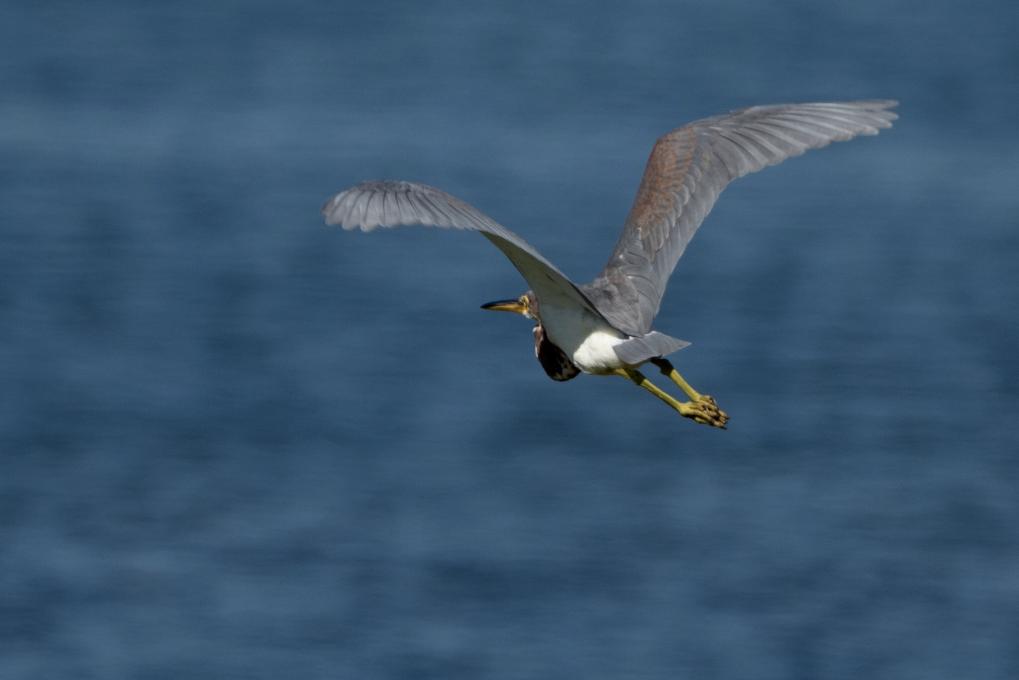
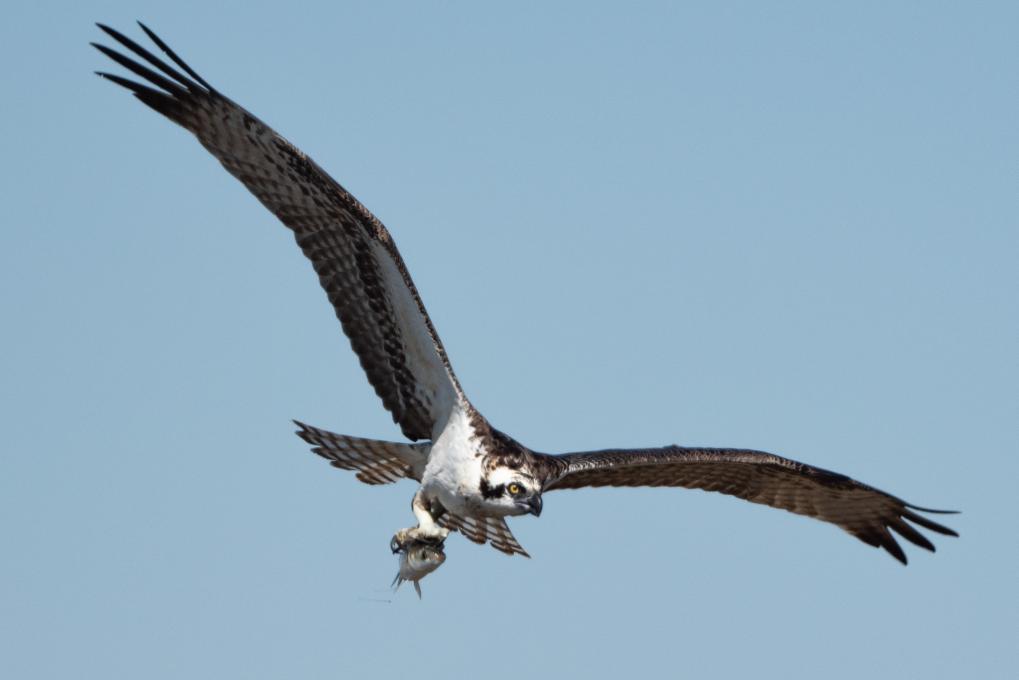

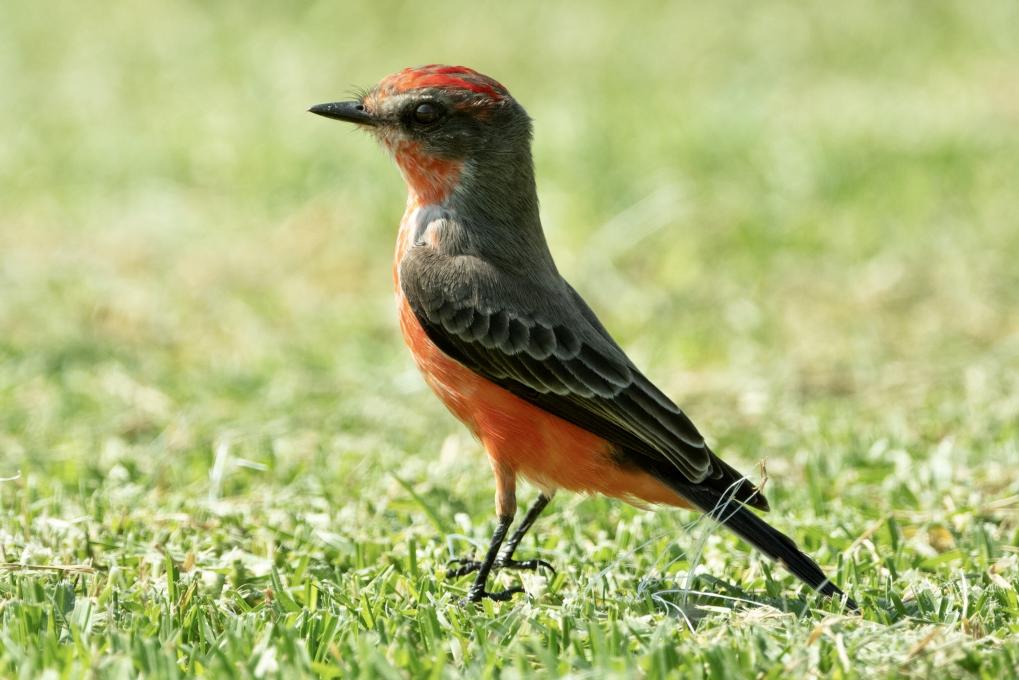 of patience!
of patience! 